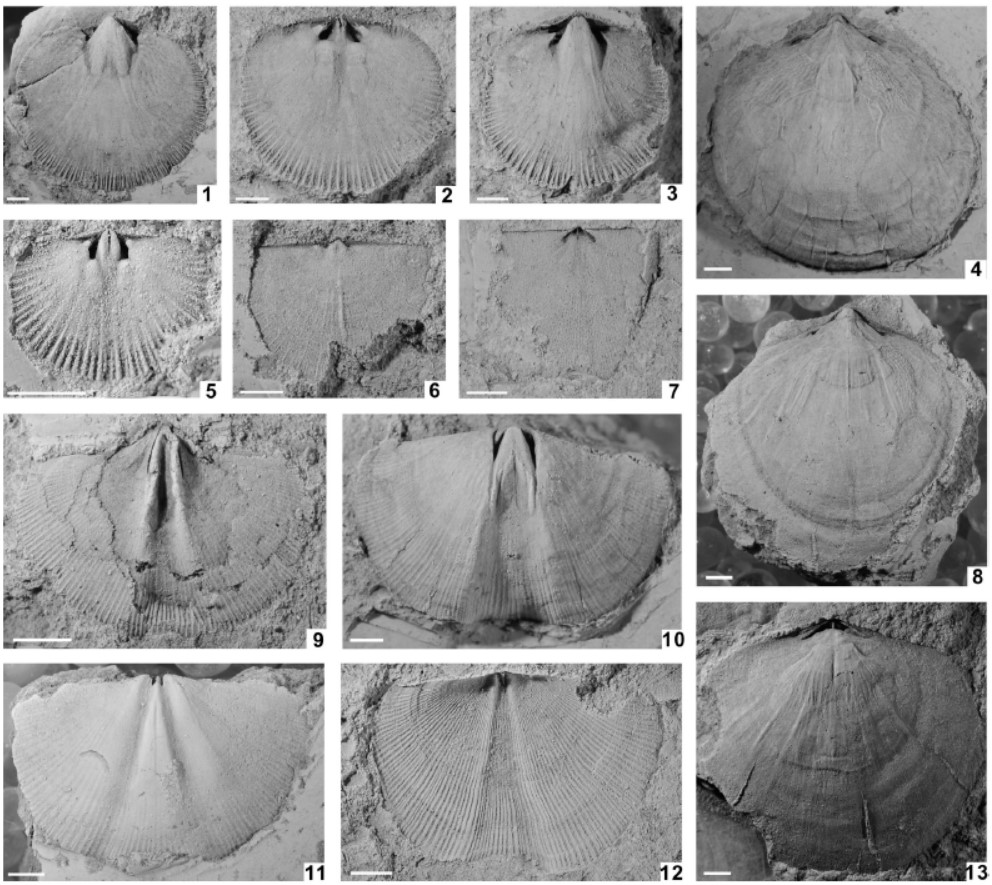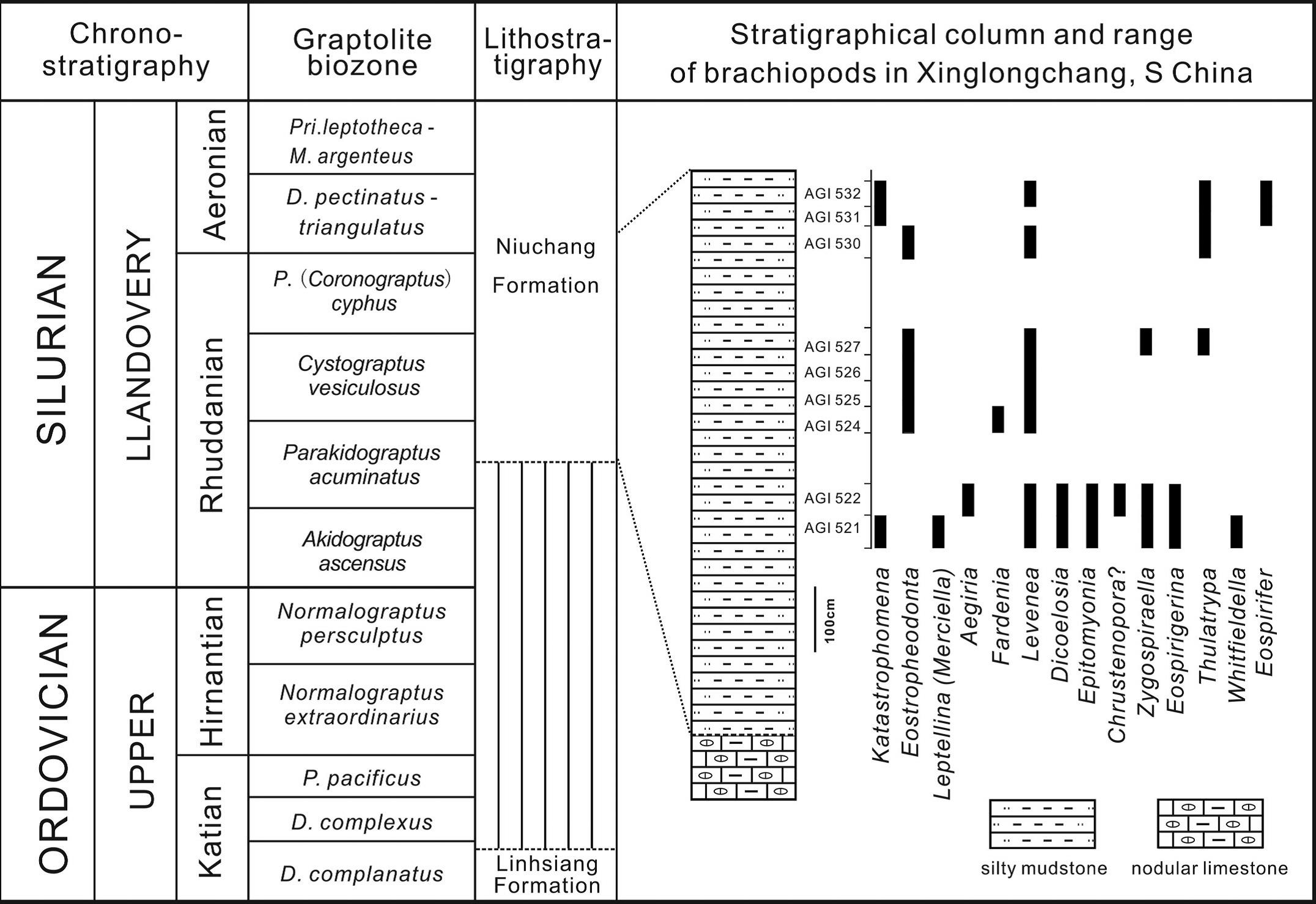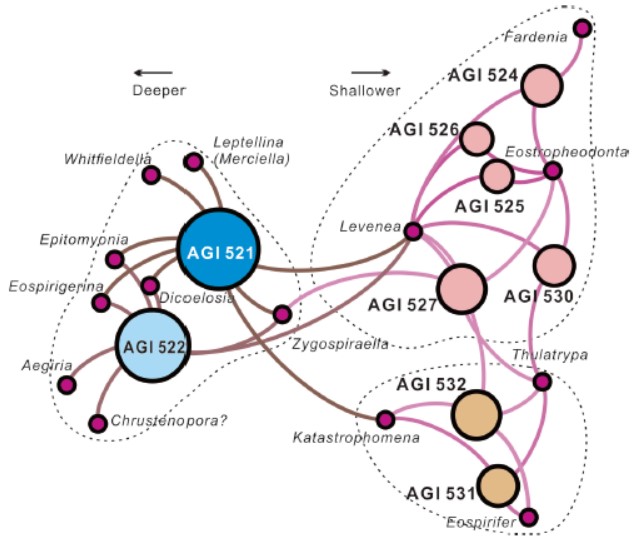
Representative brachiopods from the lower Niuchang Formation at Xinglongchang section
Following the end-Ordovician mass extinction, the interval of the latest Ordovician to the earliest Silurian was marked by a widespread transgression. The earliest Silurian brachiopod fauna has been documented from a number of regions. However, with rare exceptions, the precise age of most of those assemblages is not certain.
Recently, a recovery brachiopod fauna was found in the lower Niuchang Formation (upper Rhuddanian-lower Aeronian, Llandovery) of the Xinglongchang section, Meitan County, northern Guizhou Province, South China, by Dr. HUANG Bing from Nanjing Institute of Geology and Palaeontology, Chinese Academy of Sciences and his colleagues. Nine collections were made at the section, all of which are dominated by brachiopods, and three associations are recognized here and their paleoecology is discussed.
Paleoenvironmental analysis shows a shallowing upward trend for the lower Niuchang Formation although a global transgression was happening at that time. The balance between the global transgression and the regional Qianzhong Uplift guaranteed a stable environment for the formation of the Niuchang Formation and the recovery of brachiopods in South China after the end-Ordovician mass extinction. In addition to the traditional methods of PCA and CA, a relatively new technique to paleontology, “Network Analysis” (NA), is applied successfully in this study. It is suggested that Network Analysis could be used as one of the supporting methods in investigating brachiopod paleoecology.
Related information: Huang Bing, Zhan Renbin, Wang Guangxu. 2016. Recovery brachiopod associations from the lower Silurian of South China and their paleoecological implications.Canadian Journal of Earth Sciences. Vol 53: DOI: 10.1139/cjes-2015-0193.

Nine collections made in the lower Niuchang Formation (upper Rhuddanian to lowermost Aeronian, Llandovery, lower Silurian) at Xinglongchang section

The bipartite network diagram of NA, three brachiopod-dominated associations were consistently recognized
